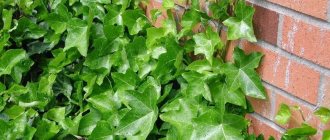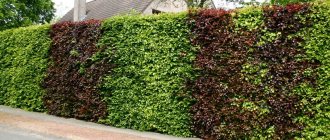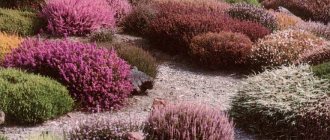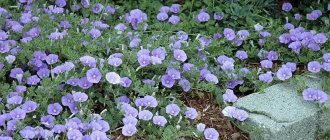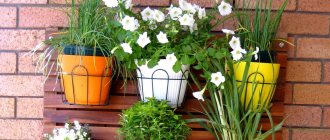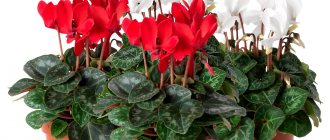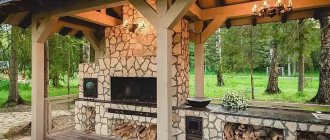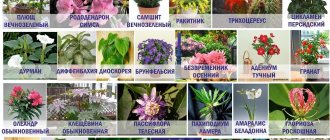About planning a summer cottage
When deciding on a garden design option, you need to decide in advance what you want to see as a result, only after that you can start choosing and purchasing plants. After dividing the territory, you can begin planting them according to the drawn up project.
When choosing plants, you should pay attention to the following points:
- duration and timing of flowering;
- the height of the bush and the area it will occupy;
- plant lifespan;
- frost resistance indicators of the variety;
- requirement for care.
The composition and quality of the soil on the site can also influence the choice of plants. Naturally, all selected plants must correspond to the style in which it is planned to decorate the garden.
Let's proceed to a direct examination of the characteristics of the most popular plants.
We invite you to watch a useful video on how to properly plan a site and what ornamental shrubs to plant on it:
Low growing shrubs
The low-growing category includes low bushes with shoots up to 1 meter in height. To decorate the garden choose:
- conifers, they are good at any time of the year;
- evergreen with leathery leaves;
- foliage changing color in autumn;
- with edged, red, two-color, carved, palmate, umbrella leaves;
- different flowering periods;
- decorative fruits and berries.
The simplest border of perennial hosta will make any composition in the flowerbed complete
The bushes grow well in open ground and are capable of:
- create compositions yourself;
- serve as a background for other plants;
- form a hedge;
- decorate flower beds and parterre lawns.
The varieties will be discussed further.
Note ! For planting around the perimeter of the site, choose thorny bushes that can be pruned. They are used to form fences that protect against wild animals at any time of the year.
Spirea
Spirea
After winter, you want to admire beautiful flowers as early as possible, so early flowering crops are of interest. The leader in this group is spirea.
The plant is divided into two types: summer-flowering and spring-flowering. Summer varieties have pink and lilac buds, and spring varieties have white buds.
The flowering period occurs in the first days of May; it can last until the end of June, or even until mid-July.
Some varieties of spirea, under favorable weather conditions, can re-bloom in the fall.
Features and Specifications:
- easy to care for, grows on all types of soil;
- the height of the bushes can vary significantly; there are varieties that are short (up to fifty centimeters) and tall (up to two and a half meters);
- has high frost resistance;
- characterized by long-lasting abundant flowering;
- grows quickly;
- is an excellent honey plant;
- actively develops and blooms in sunny areas and in partial shade.
Decorative flowering shrubs for the garden with photos and names
Many flowering ornamental shrubs, in addition to aesthetic beauty, can please the owner of the site with a rich and tasty harvest.
Weigela
This type of planting will become a real decoration of the site throughout the year, and especially during the flowering period. The decorative deciduous variety Nana Variegata attracts attention with its original foliage, decorated with a golden edging, and the variety Nana Purpurea is notable for its dark leaves that are red-brown in color.
Flowering varieties of weigela can please the owner of the site with pink bells throughout May, and some varieties, for example, Middendorf, throw out buds twice a year.
Nana Variegata attracts attention with its original foliage
Jasmine
No summer resident will probably miss the opportunity to plant a jasmine bush on his plot. Its amazing aroma is liked by all people, without exception. Currently, breeders have developed many varieties of this plant that have different shapes, colors and aroma. White-flowered jasmine does not require special care; it is disease-resistant and tolerates winter frosts well. These low, beautiful ornamental shrubs are not only flowering, but also frost-resistant.
White flower jasmine does not require special care
This bush can be planted either individually or close to other plantings. Caring for jasmine involves timely, moderate watering. The flowering period usually occurs in May, but some varieties produce buds in summer and even autumn.
Kalina
Viburnum is a decorative deciduous plant that bears fruit. This is a very unpretentious plant that grows well in shady areas, loves moderate watering and tolerates cold well. During the flowering period, the crown of the bush is decorated with large snow-white inflorescences, and the fruits of viburnum are known for their healing properties.
Viburnum is a very unpretentious plant
The flowering period occurs from mid-May to late June and lasts about 20 days. The leaves for this ornamental shrub for the garden can also have different shades, the foliage is predominantly green with golden and reddish hues. Currently, over two hundred species of viburnum are known, including evergreen shrubs, but in our area the most common are common viburnum and viburnum buldenezh.
Rose hip
This well-known ornamental shrub for the garden can be found in many areas and this is not at all accidental. In addition to its attractive appearance, rose hips have many beneficial properties. Rosehip bushes can make an excellent prickly barrier, which during the flowering period will be covered with pink and red flowers, and double rosehip flowers are often compared to roses. Rosehip has many healing qualities; its red berries are used as a natural medicine that can cure various diseases. Rosehip bushes grow well in sunny areas or in partial shade; they have a dense crown, quickly grow and branch.
Rosehip bushes make an excellent prickly fence
Forsythia
Lovers of bright colors plant flowering ornamental shrubs in their dachas. One of the most variegated representatives of such plantings is called forsythia, which during the flowering period is completely covered with bright yellow bells. The flowering period begins in early spring and lasts about 3 weeks, and leaves begin to appear only after the flowers fall.
Bright forsythia in a hedge
Forsythia is a small ornamental plant that can be used to form a hedge. It can grow both in an open lawn and in a flower bed in combination with other flowers. This is a very heat-loving plant that should be protected from winter cold. Forsythia is not recommended to be planted in a draft or to be overly moistened.
Budleya David
An ornamental shrub called Budleya is very popular among gardeners and summer residents. It attracts attention with its original flowering; its elongated inflorescences can have blue, pink and lilac shades, and also emit a pleasant sweetish smell. The flowering period is quite long - it starts in mid-summer and lasts almost until the end of September. The height of the Budleya bush can reach up to 3 meters. It can be planted in a flower bed near roses and other flowers or on the lawn. It loves light areas and develops well in fertile soil; it is not recommended to plant this plant in drafts. Budleya can also grow in a large flowerpot, so with the help of this planting you can decorate the entrance to a country house, and also use it to decorate a terrace.
Budleya Davida is very popular among gardeners
Deytsia
This ornamental shrub is related to mock orange and hydrangea. The flowering period of deutia is very long; its snow-white or white-pink racemose inflorescences begin to bloom in mid-June and will decorate the area for 30-60 days. Deutzia bush can reach up to 4 meters in height. The plant grows well in shaded areas that are protected from drafts. It looks beautiful on an open lawn, and is also suitable for forming a hedge along the site.
Deytsia looks beautiful on an open lawn
Japonica
Ornamental shrubs such as Japanese quince not only perform a decorative function, but can also please their owners with tasty and healthy fruits. The height of the quince bush exceeds 2 meters. At the end of May - beginning of June, quince is covered with bright red flowers, and with the arrival of autumn it bears fruit with edible fruits that are rich in vitamins.
Japanese quince can please you with delicious fruits
Broom
This is a very beautiful type of decorative planting that grows in many summer cottages. Broom is very unpretentious, it can grow well even in poor soil, and also tolerates dry and frosty weather well. Broom flowers have different shades. The flowering period lasts about 30 days. Broom is a honey plant, so it is often planted on slopes.
Broom grows well even in poor soil
tree peony
Perhaps not a single garden plant can compare in the beauty of its flowers with the tree peony. This ornamental plant can decorate any area.
Tree peony can decorate any area
Rhododendron
It is not for nothing that this shrub is called the favorite of all summer residents. In spring, it is completely covered with bouquets of pink, lilac, red or lilac.
Rhododendron - a favorite of all gardeners
Buddleya
Buddleya
This culture is famous for its low maintenance requirements and abundant long-lasting flowering. It also tolerates frost and severe cold well.
It can be planted in gardens located in areas with harsh winters.
Loves areas in full sun and is drought tolerant. In appearance it resembles a lilac bush.
Buddleia is a tall ornamental shrub; its branches can reach a length of up to three meters. It blooms in late May, early June, a little later than spirea and blooms until frost, about three months. The flowers have a pleasant aroma that attracts butterflies.
After flowering is over, it is important to get rid of all the reddened shoots.
Lilac
Lilac
It is difficult to imagine a cottage or garden without lilacs. It is famous for its frost resistance (does not require winter shelter) and low maintenance requirements. The plant does not need a choice of soil; it feels great even in poor, infertile soil.
The only thing you need to take care of is proper pruning of the bush. The bush should not be allowed to grow only in height; it must increase in volume. Every spring you will need to remove root shoots.
Plant height is from two to five meters. Depending on the variety, the inflorescences are white, lilac, dark purple, pink and blue. Flowering period May - June.
The foliage has a rich green color, which remains until the onset of frost.
Mock orange, or garden jasmine
Chubushnik
This deciduous ornamental shrub is recommended for planting by lovers of a bright, rich aroma. The dark green color of the leaf plate and the snow-white jasmine buds will serve as a good decoration for any landscape composition.
Some varieties of jasmine have slightly creamy flowers.
The positive aspects include the plant’s high frost resistance and stable immunity to many diseases. Mock orange bushes are extremely rarely affected by insect pests.
The height of the bush is from two to two and a half meters; in countries with cold climates, mock orange grows up to 4 meters. The crown is spreading, not dense.
Low-growing varieties are planted in flower beds, medium-growing varieties are used to create a flower arrangement or as a hedge, and tall varieties are used for solitaire planting.
The disadvantage of the culture is that it cannot tolerate drying out of the soil. It is recommended to water every two days during hot periods, and once a week in temperate climates.
There are varieties whose flowers have no aroma, so before purchasing seedlings it is worth clarifying this nuance.
Rhododendron
Rhododendron
A perennial, lushly flowering shrub, it belongs to the Heather family. Plant varieties are evergreen and deciduous. A striking detail is the abundant flowering and delicate aroma.
The flowering period lasts one and a half months. The more often you thin the bush, the more inflorescences you can expect. With good care, rhododendrons bloom so actively that leaves and shoots are not visible.
The inflorescences have a variety of colors: pink, red, white, lilac and violet. The shape of the buds also varies depending on the variety. The most common forms are bell-shaped, tubular, wheel-shaped or funnel-shaped.
Rhododendron requires constant care. It is necessary to carry out regular watering, weeding of the tree trunk, fertilizing with minerals, pruning, for rejuvenation and formation of the bush. It is important not to forget about the need to prevent diseases.
The most frost-resistant ornamental shrubs
If you constantly worry about unexpected seasonal frosts or live in harsher regions, these options are for you!
Barberry
Barberry easily endures winters without shelter, and even if it freezes slightly, it recovers itself in the spring. Closer to summer, it is covered with cute small flowers, which then turn into fragrant berries.
Canadian roses
Not many people know, but Canadian roses are real record holders for cold resistance. The shrub tolerates frosts even down to -45 degrees, and also easily recovers on its own.
Hydrangea
Hydrangea combines a lot of pleasant benefits. It easily tolerates not only frosts, but also lack of light and high soil moisture. In addition, hydrangea can rightfully be called one of the most beautiful flowering shrubs.
Juniper
Juniper is regularly used in the design of hedges. Some of its species are not at all afraid of cold, moisture and shade, and moreover, they rather suffer from too bright scorching sun.
Chubushnik
Depending on the type, mock orange consistently pleases with snow-white or pale pink flowers. It is very resistant to frost and shade, but it must be watered regularly.
Chubushnik (75 photos): types, planting and care
Magnolia
Magnolia
About one hundred and twenty varieties of this plant are known, twenty-five of them are winter-hardy.
In the wild, the plant can grow up to thirty meters in height, and is more like a tree, but is a representative of deciduous shrubs.
In the garden and country house, magnolia grows from five to ten meters.
The inflorescences come in lilac, pink, white, purple, red and cream colors. The flowers are large (from 6 to 35 centimeters), bisexual, fragrant. Emerald colored foliage. Depending on the variety, flowering may begin in May or June.
It needs constant watering as it does not tolerate dry soil well.
It is also recommended to periodically fertilize the bushes.
Shade-loving shrubs
For most summer residents, shady corners of the garden are an eternal problem. It is important to plan the site in such a way as to use the area to its maximum benefit. Under mature tall trees, in the shade of houses and buildings, there is never enough sunny color. Most plants do not grow in such conditions or are inhibited as they grow. Decorative foliage plants are selected according to certain characteristics: growth rate and light requirements.
Advice! Shrubs planted for hedges must be trimmed twice a year: in spring and autumn.
In areas with insufficient lighting, it is necessary to plant varieties that grow and develop well in the shade.
- Rhododendron. A spectacular flowering shrub with intensely colored inflorescences and fleshy leaves. It can grow in the shade of trees, houses, fences, without losing its visual appeal.
- Mahonia. During the flowering period, a small spreading bush is strewn with large lemon-yellow inflorescences. Loves abundant and regular watering.
- Deytsia. Tall, up to 2 meters, the shrub blooms for a long time with abundant color, odorless. Rather, it performs only a decorative function. Looks great in single plantings and group compositions.
- Honeysuckle. Tall, up to 3 meters in height, a bush with a variety of flower colors, from white to bright red. Inedible orange and red fruits serve only a decorative function.
- Hydrangea. Lush decorative flowering plants. It differs in the number of different varieties, from low-growing to very tall. Huge inflorescences come in different colors. The bush prefers shade and high soil moisture.
- Maiden's grapes. Lianas are used for vertical gardening, design of gazebos, arches, canopies and recreation areas. The color of the leaves varies from green to burgundy-purple.
Rhododendron
Mahonia
Deytsia
Shade-loving shrubs will allow you to improve any area, areas without sunny color. They grow well, bloom and bear fruit. Decorate the area in the most shaded places.
Camellia garden
Camellia
In any garden there are places where sunlight does not reach. Not all plants do well without light. Camellia garden in this case is an ideal option.
The shrub is quite capricious and requires constant and delicate care. Particular attention should be paid to watering.
The plant is demanding on water quality and its composition. It is strictly forbidden to water with water that contains lime. It is best to use settled, soft water.
With appropriate care, the plant will reward you with an abundance of flowers.
Despite its capriciousness, camellia has a great advantage - frost resistance; it calmly tolerates severe frosts and does not need shelter.
In appearance, camellia buds are somewhat similar to peonies or roses. But, unlike these flowers, these plants have no smell. The flowers are large, voluminous, about ten centimeters in diameter. The colors are different: pink, red, coral and white.
Fruit bushes
Fruit bushes are most often planted in garden plots. Needless to say, in almost any dacha you can find currants or cherries, plums or raspberries. Today, these berries are more used for planting a beautiful and blooming garden. This is understandable, because each of them blooms beautiful flowers in the spring.
If you don’t have enough space in your summer cottage and you can’t afford to plant beautiful flowering and ornamental shrubs, use fruit varieties. Plant several varieties at once.
By the way, look at the previous article. There is a lot of useful information for you - Rhododendron: planting and care.
For example, raspberries are not only red, as many are accustomed to seeing, but also white, black and even purple. The seemingly ordinary gooseberry or currant has the same characteristics.
Designate a space on the site for planting fruit bushes. With their help, you can create a unique and attractive garden design with beds for growing vegetables.
Fruit trees and shrubs. Landscape tricks 14
Wintergreen
Wintergreen
This shrub, like camellia, prefers to grow in the shade. Wintergreen grows slowly, but is long-lived, with a lifespan of about fifty years. This is an evergreen crop with high winter hardiness.
The shoots grow compactly, the leaves are dark green in color, shiny, and small in size. The first inflorescences form at the end of May, beginning of June, depending on the variety and region.
The buds are pale pink or white, similar to lilies of the valley. In some species the buds are collected in inflorescences, while in others the flowers grow singly. Each flower has delicate, thin petals, and has a delicate aroma.
There are also fruits, but they are not edible, but decorative. Similar to cranberries, bright red, dark blue or white, ten millimeters in diameter. Against the background of dark green leaves, the fruits look very attractive and remain on the shoots for a couple of months.
For what purposes are evergreen bushes grown?
Basically, bright hedges are made from beautiful evergreen shrubs. In addition, bushes can serve as a decoration element. Let's look at the main types of bushes that do not lose their green color even in winter.
Magnolia
A bush no more than 1 m high with beautiful green leaves. For a long time, the plant is able to maintain foliage, slightly changing only its color.
So, in the warm season the leaves are green in color, and in the cold season they acquire a copper tint.
Honeysuckle
Another green bush. It has a height of no more than 50 cm. It can grow in the shade, this will not affect its condition in any way. In winter, it is recommended to cover honeysuckle.
Rhododendrons
A low bush growing in a shady area. It is not recommended to water frequently. In winter, the plant also needs to be covered.
Hydrangea
Hydrangea
Tree hydrangea is an ornamental frost-resistant North American shrub. There are varieties of hydrangea of Chinese and Japanese origin, but they tolerate winter frosts less well and require constant care. The plant is moisture-loving and feels more comfortable in shade or partial shade. For planting, it is necessary to use drained and acidic soil.
During the flowering period, large white flowers similar to white caps are formed on the bush. In landscape design they are used as a single or group planting. Combines well and grows next to other deciduous plants and coniferous crops.
The hydrangea variety, Paniculata, is very popular. The height of such a plant is three hundred centimeters, the crown is spherical and wide. The buds are from fifteen to twenty centimeters in length and thirty centimeters in width. In mid-autumn, the white flowers turn red. Flowering begins in mid-July and lasts until late autumn.
Blooming
The most beautiful bushes are plants that delight the eye with bright inflorescences from spring to late autumn. If you choose the right range of tones of blooming buds, you can create a unique landscape composition.
Barberry deciduous
A perennial shrub with brown bark and leaves arranged on petioles of 3-6 pieces. They come in different shapes: ovoid, elliptical, lanceolate. As autumn approaches, the foliage turns purple. At the end of spring, yellow flowers appear, collected in clusters of 8-10 buds. By autumn, small red fruits with a sour taste are formed instead.
Related article:
Elderberry: photo and description of the plant
The height of the bush reaches 2 m. It tolerates heat and cold well, and grows even on depleted and rocky soils. In landscape design it is used as a hedge. It looks expressive surrounded by pine needles and on green lawns.
Read about the types of barberry with descriptions and photos in the article
Weigela
An amazingly beautiful plant, on which lilac flowers appear along the shoots in May-June. The culture loves fertile soils, vast and windless space. When planting several bushes, it is better to place them at a distance of 2 m from each other.
The culture grows quickly, reaching a height of 2 m. It thrives in sunny and shaded areas. There are frost-resistant varieties that can be planted in northern regions.
Related article:
Decorative foliage plant kochia
Hydrangea
A winter-hardy ornamental shrub that came to us from North America. There are Japanese and Chinese species, but they are more demanding to care for. Tree hydrangea is decorated with white inflorescences in the form of panicles, reaching a length and width of 30 cm. Flowering begins in mid-summer. By autumn, the inflorescences acquire a reddish tint.
The plant loves moist soil: it is better to plant it in the shade. When planting, peat and drainage are added to the hole; as a top dressing, it is recommended to regularly acidify the soil with iron sulfate.
Deytsia
A shrub up to one and a half meters high, on which double flowers of pink or white appear in June. The culture grows on any soil, but does not like stagnant moisture. Feels equally good in the shade and in the sun.
Related article:
What shrubs can be planted near the house
The most unpretentious is considered to be deutzia rough with soft pink inflorescences. In winter, the branches of the bush are pressed to the ground so that they do not freeze at low temperatures.
Derain white
The dacha shrub belongs to the Dogwood family. Its red-black shoots are highly branched, reaching a height of 3 m. They contain leaf plates in the shape of an ellipse up to 10 cm long, green in color with white edges along the edges. The inflorescences are corymbose, consisting of white small flowers, divided into 4 lobes. The plant blooms from early to mid-summer, and buds appear again in the fall. They look especially beautiful against the background of foliage, which takes on a burgundy hue with the arrival of cold weather.
Derain can be safely planted at the dacha in the northern regions: it is frost-resistant and unpretentious. With the help of pruning, it is formed into a spherical bush. It is not afraid of heat and shade, so it is planted under tall trees and in open sunny areas.
Related article:
TOP 7 ornamental shrubs that will become a real decoration of the garden
Cinquefoil shrub
The plant is also called five-leaf tea or Kuril tea. All summer the bush is abundantly covered with white or yellow small flowers. They can be single, racemose or umbrella-shaped.
The culture reaches a height of 1.5 m. The plant loves light, is drought-resistant, and thrives in moist soils. It is suitable for cutting and shaping by trimming.
Find out more: Potentilla fruticosa flower
Red Robin
Spirea
Frost-resistant and unpretentious shrub, blooming in summer or spring, depending on the species. Pink buds are collected in spherical or paniculate inflorescences. When flowering ends, weakened branches are removed.
Using pruning, you can also shape the bush into a ball. Plant height is up to 2 m. When creating a landscape composition, varieties are selected in order to achieve continuous flowering and create transitions in different shapes and colors.
Related article:
Growing magnolia
Bladderwort
Frost-resistant, large, deciduous and ornamental shrub. There are two types of vesicle carp - with purple leaf blades and golden leaves.
Bladderwort
Features and Specifications:
- The height of the stem ranges from one to three meters.
- The leaves are five or three-lobed, similar in shape to viburnum leaves. In diameter - five, seven centimeters. Belongs to the fast-growing type.
- Gas-resistant and drought-resistant.
The culture is unpretentious in care. Throughout the growing season it maintains a presentable appearance. Most often in landscape design they are used to create hedges or planted as a single plant.
The bladderwort is not picky about the soil, but it is worth draining and it is better if the soil contains lime. This will significantly affect the decorative qualities of the crop.
Japanese quince
What bush should a person who loves oriental culture plant in their dacha? Of course, Japanese quince, the fruits of which are slightly smaller than usual, but can also be eaten. However, most summer residents do not plant the plant because of this. This is due to the incredibly beautiful flowering of this shrub.
If you want a piece of the Japanese spirit to appear in your garden, then be sure to plant this quince on your plot. It is best to choose a sunny place that is swampy (the culture loves water very much). But quince is unpretentious in terms of soil composition, so any soil will do.
Most experienced gardeners prefer to plant Japanese quince separately from other plants. The crop is suitable for creating a hedge, but it will look great somewhere in the center of the site so that all the attention of household members and guests is drawn to it.
The peak of the decorative value of this plant occurs at the beginning of summer. Flowering lasts from June to September, so we can say that the garden will be beautifully decorated all season. So if you are still thinking about which bush to plant for maximum decorativeness, then choose this quince. It's unlikely you'll regret it.
We hope you now know what shrubs you can plant in your dacha. Of course, there are more beautiful cultures. However, in our article we tried to tell you which bushes can be planted so that you don’t have to take a lot of care for them. So you can safely choose one of the proposed options if you do not have much experience in gardening.
Rosehip May
Rosehip May
Belongs to the Pink family. Flowers, leaves, fruits, twigs and roots are often used in medicine, which is why many people treat rose hips as a medicinal shrub. However, the May rosehip is a decorative frost-resistant, perennial shrub that can decorate any summer cottage.
The height of the plant is one and a half, two meters. The shoots are covered with thorns and twig-like. The flowering period occurs in May or June; it blooms for a month and a half. The buds are pale pink, large, fragrant. The fruits are long and spherical, red in color. Ripening occurs in August. The shrub grows quickly and is easily replanted.
Other types of shrubs for the garden
There is another division of shrubs - they are deciduous and coniferous. Both of them are successfully used in garden design.
Moreover, coniferous bushes look advantageous not only in a group, but even as single plantings.
Recently, garden designers have been recommending the use of topiary pruning of some types of shrubs, which turns deciduous and coniferous plant species into green sculptures.
It is especially beautiful to use clipped sculptures to mark the entrance (gate) to the site.
We recommend reading:
The best conifers for landscape design in a dacha garden- Effective Weed Killer - Review of the Best Weed Removal Products and Methods. Geotextiles and rules for their installation (145 photos and videos)
Flowers for a flower bed that bloom all summer - a review of unpretentious types of flowers for the whole summer (85 photos)
Forsythia
Forsythia
This culture became famous for its flowering.
It is noteworthy that at first yellow flowers appear on the branches, and later, when the buds fall, leaves form on the bush. The first buds bloom at the beginning of spring.
The disadvantage of this crop is that the plant is heat-loving and is not suitable for cold regions. Even with good shelter for the winter, forsythia may die.
Also, the shrub does not tolerate high soil moisture, so it is worth avoiding stagnation of water after watering. It is important to protect the plant from through areas.
The advantage of forsythia is its strong immunity to many plant diseases. Used as a single planting.
Weigela
Shrub height from one to two meters. The flowers are funnel-shaped and bell-shaped, about five centimeters in diameter.
Weigela
The buds are single and have different colors: pink, red, yellow and cream. Very often, the buds at the beginning of ripening are pale in color, and over time they add juiciness and brightness. There are fruits that contain seeds inside.
Weigela blooms twice. The first buds bloom in mid-spring, and the second time - at the end of summer.
We invite you to watch another video about ornamental shrubs for a suburban area, which can be used to create a hedge:
This is a small list of plants that are ideal for any summer cottage. Before planting, you should familiarize yourself with the characteristics of the shrub so that there are no problems with care in the future.
